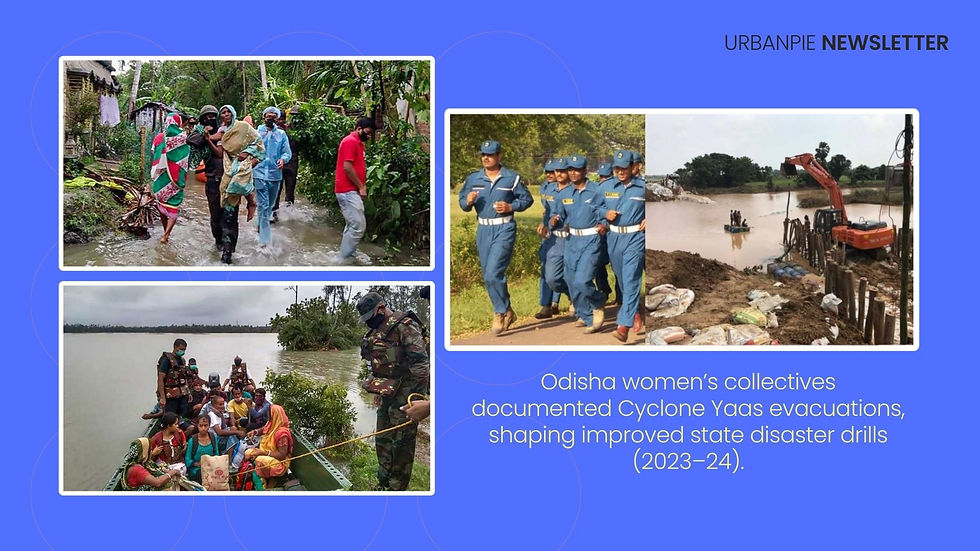Case Studies as Bridges: Turning Real-Life Experiences into Shared Learning Tools
- Innovate Urban
- Sep 2
- 2 min read
Stories are not just narratives — they are repositories of lessons, patterns, and shared meaning. In the development sector, case studies move beyond documentation. They create bridges between lived experience and institutional knowledge, ensuring that insights are not lost but transferred across teams, organisations, and even generations.
This edition explores how case studies can serve as tools for collective learning and why storytelling formats are critical for building institutional memory in a rapidly changing sector.
The Gap in Knowledge Retention
Development projects often generate rich experiences, but these remain fragmented in reports or lost with staff turnover. Formal monitoring captures outcomes, yet rarely the process of how change unfolded. Without systematic storytelling, organisations risk repeating mistakes, overlooking innovation, and missing opportunities to scale.
How Real-Life Experiences Translate into Learning
Case studies succeed because they embed lessons in context. They humanise data, making it easier to understand barriers, solutions, and outcomes.
In Odisha’s disaster preparedness programmes (2023–24), village women’s collectives documented their evacuation practices after Cyclone Yaas. These stories were later used by local authorities to refine state-wide disaster management drills.

In Pune’s participatory budgeting process (2023), community case write-ups highlighted how neighbourhood-level dialogues shaped budget priorities, providing city officials with tangible insights on citizen engagement models.

These examples worked not because they showcased success alone, but because they explained how communities adapted, negotiated, and collaborated knowledge that is transferable across geographies.
Lessons for Institutions
Narrative formats matter – Case studies framed as stories are remembered better than isolated data points.
Failure is as important as success – Documenting challenges prevents repetition and builds resilience.
Local voices add credibility – When communities narrate their own practices, institutions gain trust and accuracy.
From Reflection to Replication
Turning case studies into shared learning tools requires structured dissemination. Stories must move beyond internal circulation into workshops, training manuals, and digital platforms. When experiences are documented in accessible formats, they not only preserve institutional memory but also enable replication across regions.
Key Takeaways
Case studies are not archives; they are bridges between people, institutions, and policies.
Embedding real-life narratives strengthens institutional learning and cross-sector dialogue.
Shared learning from case studies enhances both policy design and programme delivery.
Closing Note
At Urban Innovation Lab, we see case studies as more than communication products. They are strategic instruments that preserve lessons, create shared understanding, and inform future action. By blending storytelling with analysis, UIL ensures that valuable experiences are not just documented but transformed into tools for replication and scale.
FAQ
Q1. What makes a case study effective in the development sector?
An effective case study blends narrative and analysis, showing not only outcomes but the process of change.
Q2. How are case studies different from reports?
Reports focus on metrics and outputs, while case studies highlight context, human experience, and learning.
Q3. Why should institutions invest in case studies?
They build institutional memory, prevent knowledge loss, and allow successful models to be adapted elsewhere.
Q4. Can case studies highlight failures?
Yes. Well-documented failures offer lessons that prevent repeated mistakes and strengthen resilience.
Q5. How does UIL approach case studies?
UIL develops case studies as bridges of shared learning, combining design, storytelling, and evidence to ensure insights reach wider stakeholders.




Comments